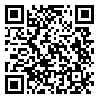BibTeX | RIS | EndNote | Medlars | ProCite | Reference Manager | RefWorks
Send citation to:
URL: http://jdisabilstud.org/article-1-3130-en.html
2- Assistant Professor, Department Of Psychology, Faculty of Education and Psychology, Alzahra Universty,Tehran, Iran
3- Associat Professor, Department Of Psychology, Faculty of Education and Psychology, Alzahra Universty,Tehran, Iran
Abstract
Background & Objectives: Depression is a persistent condition that shares many similarities with other psychological and medical issues. Persistent depressive disorder is characterized by a consistently low mood lasting for most of the day and occurring on most days for a period of two years. Among psychiatric disorders, major depressive disorder has a lifetime prevalence of about 17%, the highest lifetime prevalence. Persistent depressive disorder has a gender prevalence, with women experiencing symptoms 1.5 to 3 times more often than men. Married women are more likely to experience depression due to issues that arise in their married life compared to other individuals. Some common issues include sexual behavior disorders, difficulties with communication, emotional expression disorders, and alexithymia, the inability to identify and express emotions. Schema therapy is one of the most effective methods of psychotherapy available. Based on schema-based research, it seems that people with major depressive disorder have inconsistent schemas that lead to exacerbation of depression symptoms. This study aimed to investigate the effectiveness of schema therapy on alexithymia, dysfunctional communication beliefs and sexual intimacy in married women with persistent depressive disorder.
Methods: The study has a pretest-posttest and follow-up design, with both experimental and control groups. The study's statistical population included all married women suffering from persistent depressive disorder in Tehran in 2023, of which 40 eligible people were included in the study with a targeted sampling method. The inclusion criteria in this study included being between 20 and 50 years old, having the ability to reading and writing, and living together for 2 to 15 years. Exclusion criteria were not participating in more than two treatment sessions, unwillingness to continue participating in the research, and simultaneous use of psychiatric drugs during the study. The sample was randomly assigned into two schema therapy groups (20 people) and a control group (20 people). Schema therapy was implemented according to the protocol of Yang (2003) during 12 sessions for the experimental groups. The tools used in this research include the Toronto Alexithymia Questionnaire (Bagby, Parker Taylor, 1994), the Communication beliefs questionnaire by Romans and de Board (1995) and the sexual intimacy Scale Bagarozzi marital intimacy needs questionnaire (1997). The research data were analyzed with the help of variance analysis with repeated measurement considering the significance level of 0.05.
Results: The results of repeated measurements analysis of variance showed that the effect of schema therapy on all three variables of alexithymia (p=0.011), dysfunctional communication beliefs (p=0.015) and sexual intimacy (p=0.01) is significant. Examining the average of the variables in the three stages of pre-test, post-test and follow-up shows that schema therapy has reduced alexithymia and dysfunctional communication beliefs in the post-test and increased sexual intimacy in married women with persistent depressive disorder. Also, this research showed that the effects of schema therapy were stable over time in the three-month follow-up period.
Conclusion: The schema therapy approach in women suffering from persistent depression improved their marital relationship by identifying schemas, coping styles and mindsets. This approach improves individuals' ability to handle high-pressure situations, tackle challenges, and manage daily tasks. Schema therapy has effectively improved alexithymia, dysfunctional marital communication beliefs, and sexual intimacy in women with persistent depressive disorder. This approach can be considered a viable strategy in addressing women's issues, particularly in married women dealing with depressive disorder. This therapeutic method aims to enhance the quality of a couple's relationship by addressing and resolving their issues.
Keywords: Schema Therapy, Alexithymia, Dysfunctional Communication Beliefs, Sexual Intimacy, Persistent Depressive Disorder.
| Rights and permissions | |
 |
This work is licensed under a Creative Commons Attribution-NonCommercial 4.0 International License. |



